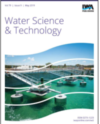How has urban water metabolism been communicated? Perspectives from the USA, Europe and Australia

Abstract
Urban metabolism is increasingly being adopted to guide city planning towards improved water, energy and material efficiency. Stakeholder participation in the adoption of this concept will be important, and hence effective communication will be crucial. This study aimed to determine how urban metabolism has been communicated and interpreted, with attention to water. The approach included (i) literature review, (ii) structured international interviews and (iii) thematic analysis. We demonstrate how diverse language, metaphors, methods, visual imagery, data and information have been used to communicate this complex topic. Maps, Sankey diagrams, concept figures, spider diagrams, pictorial flow diagrams, art, and animation have all been used. We observe barriers to communication in order to understand the communication techniques which may be effective, and clarify issues relating to awareness and target audiences. We include a discussion of the themes that emerged from the research that are relevant for integrated water planning and the power of visual imagery. Inconsistent language is influenced by widely different overarching metaphors which range from ‘organism’ to ‘ecosystem’ metabolism. Fragmented data are a major gap for shared understanding. The research provides new understanding of how stakeholders perceive urban water metabolism and its relationship to Integrated urban water management.